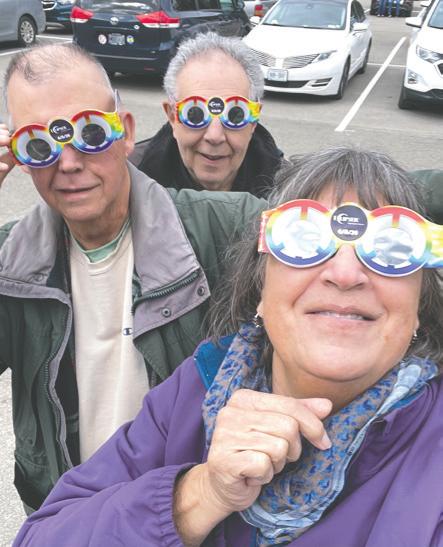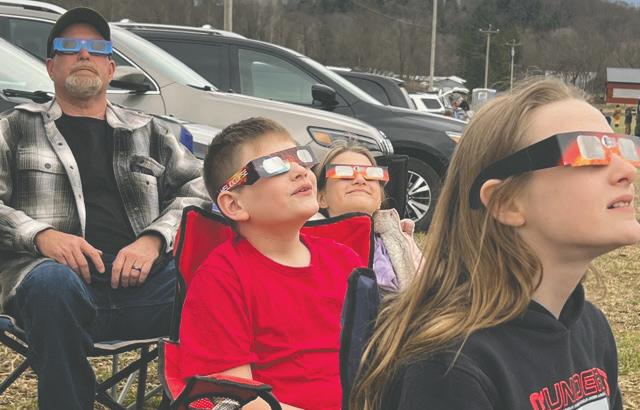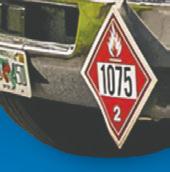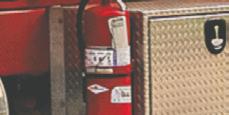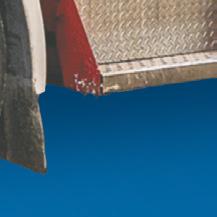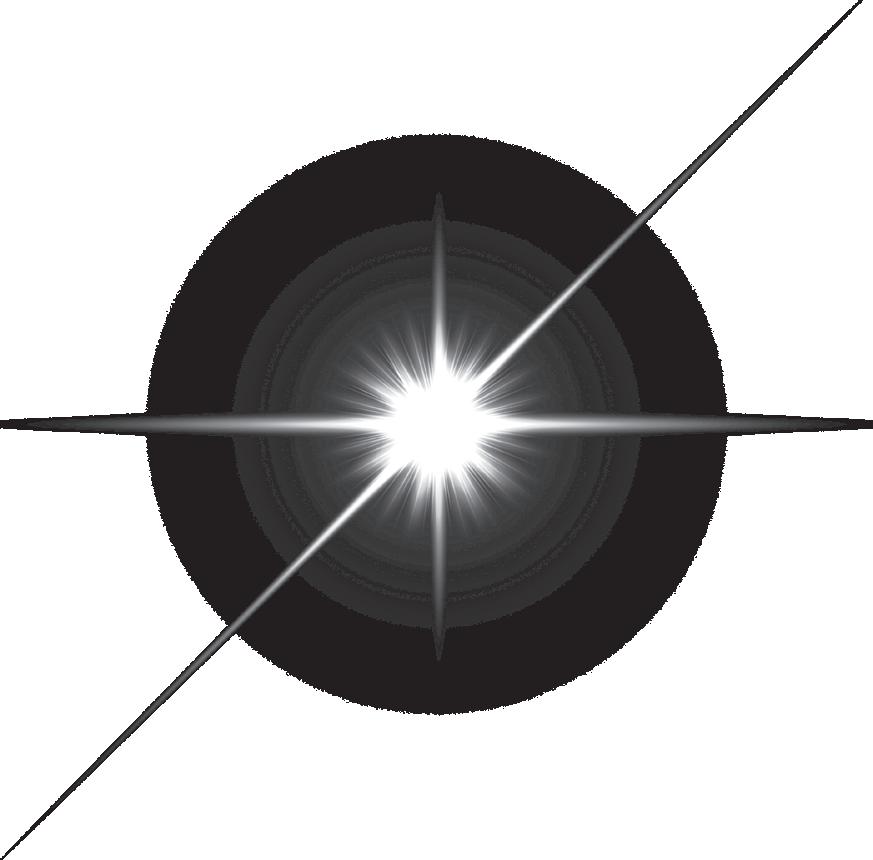


Cloudy skies didn’t dampen eclipse-watcher spirits in Cattaraugus County Eclipse watchers turn out, clouds break up enough for viewing in Mckean Co.
Olean man finds himself under 2nd total eclipse — 41 years later

PHOTO CONTEST WINNER
































Cloudy skies didn’t dampen eclipse-watcher spirits in Cattaraugus County Eclipse watchers turn out, clouds break up enough for viewing in Mckean Co.
Olean man finds himself under 2nd total eclipse — 41 years later

PHOTO CONTEST WINNER




























OLEAN — Despite the event being stifled by pesky clouds, community members in the city of Olean got a rare treat witnessing all they could of April 8’s solar eclipse.
“It’s very cool, but like everybody’s been saying it’s kind of disappointing with the cloud coverage,” Mayor Bill Aiello said.
According to the National Blend of Models forecast by the National Weather Service, Olean was projected to have 60% to 80% cloud coverage during the eclipse. For local viewers in Olean’s Lincoln Park, the higher end of that prediction felt more realistic.
There were brief windows where view-

ers were able to catch a peak of the historic event through holes in the mostly dark gray clouds but, overall, what will be spoken of most is the “intense”
darkness that fell over the city.
At State and Union streets, within the short moments that more than 99% of the sun was eclipsed by

the passing moon, it looked like night had arrived. Lighting at the First National building came on as did nearby streetlights due to their sensors detecting darkness.
“It’s historic, this is something the kids are always going to remember,” Aiello said. “The schools have told them about it and it will be a conversation piece for quite a while.”
That sentiment was corroborated by Washington West Elementary School reading teacher Ann Sorokes, who said that events happening within Olean City School District in the lead-up to the event
Spencer Bates/Olean Times Herald The Olean Times Herald’s Spencer Bates was at State and Union streets when the lights at the First National building were triggered during near-totality. Spencer Bates/Olean Times Herald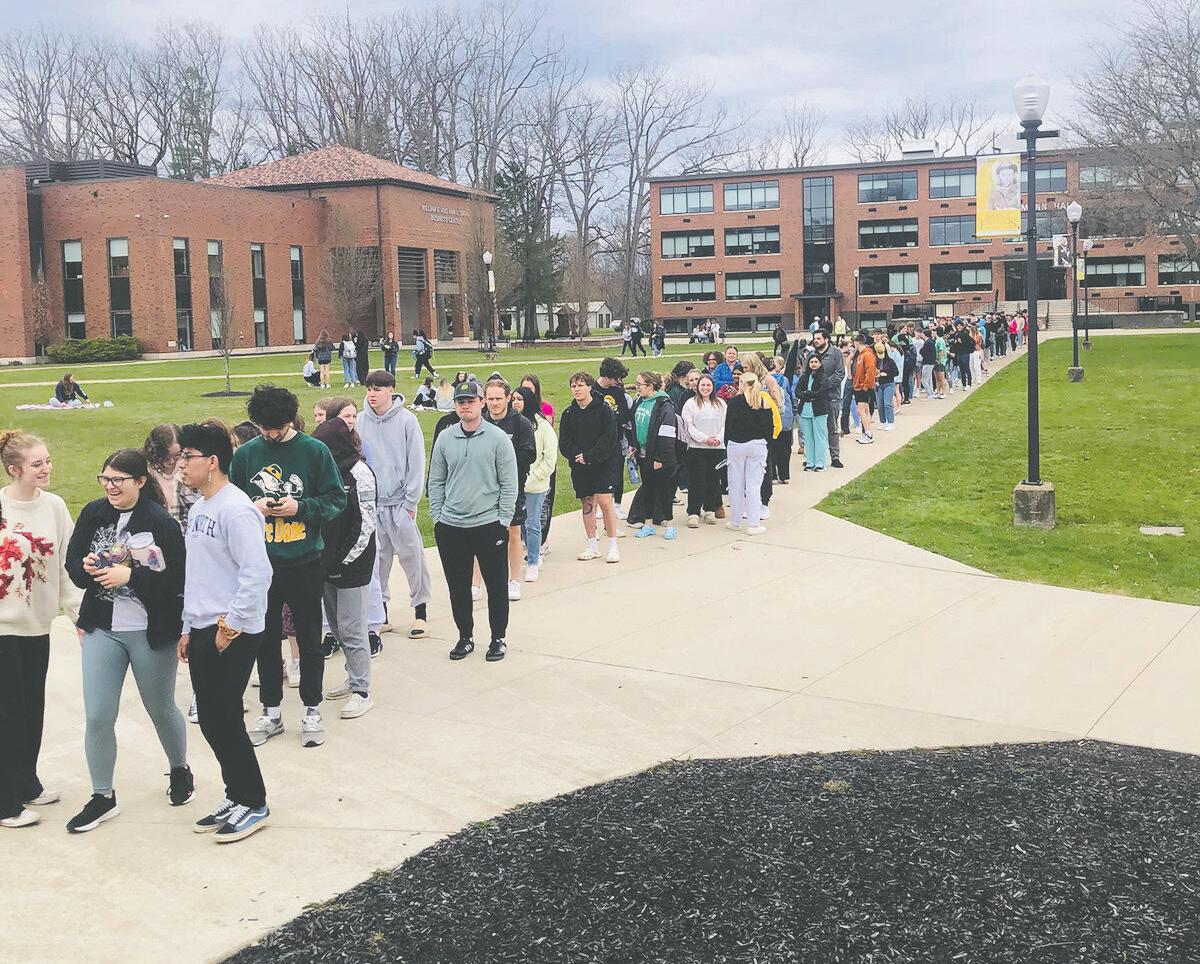
had increased student anticipation for the eclipse. And while the students may not have been able to speak so much about witnessing the event due to the unfortunate weather, she still believes that it will be a highly discussed topic in the coming days.
“I think kids will be excited when they go back to school and they can say that they saw at three in the afternoon that it was almost dark out,” Sorokes said. “We talked about it (in class) and we had all kinds of fun events happening (in the lead up to the eclipse).”
The excitement was not exclusive to the elementary school students either. Olean High School teacher Marie Rakus recalled hearing the event at the center of many conversations before

America won’t be for another 20 years in 2044.
“It’s kind of a letdown … but what’s the saying? It is what it is,” Aiello laughed.

the school’s early dismissal on Monday, which she was grateful for.
“I know some of the high school kids were excited, some were really looking forward to it,” Rakus said. “I’m glad that the district gave us the half day, because,
if anything, it hyped (the eclipse) up and got the kids and staff excited.”
While the weather may have spoiled some of the fun of the day, the event was still historic and special for the community as the next eclipse that will be visible in North
At St. Bonaventure University, a few hundred students lined up for free eclipse glasses — which few of them would end up needing — as well as free t-shirts. The first 275 students received SBU eclipse t-shirts while there were select brands of snacks and candy available with names suitable for the theme of the day: There were Sun Chips, Milky Way candy bars, Moon Pies, half-moon cookies and Starburst candies.
Tom Missel, chief communications officer at SBU, explained that eclipse totality on campus occured at 3:20 p.m., with a duration of approximately 13 seconds.
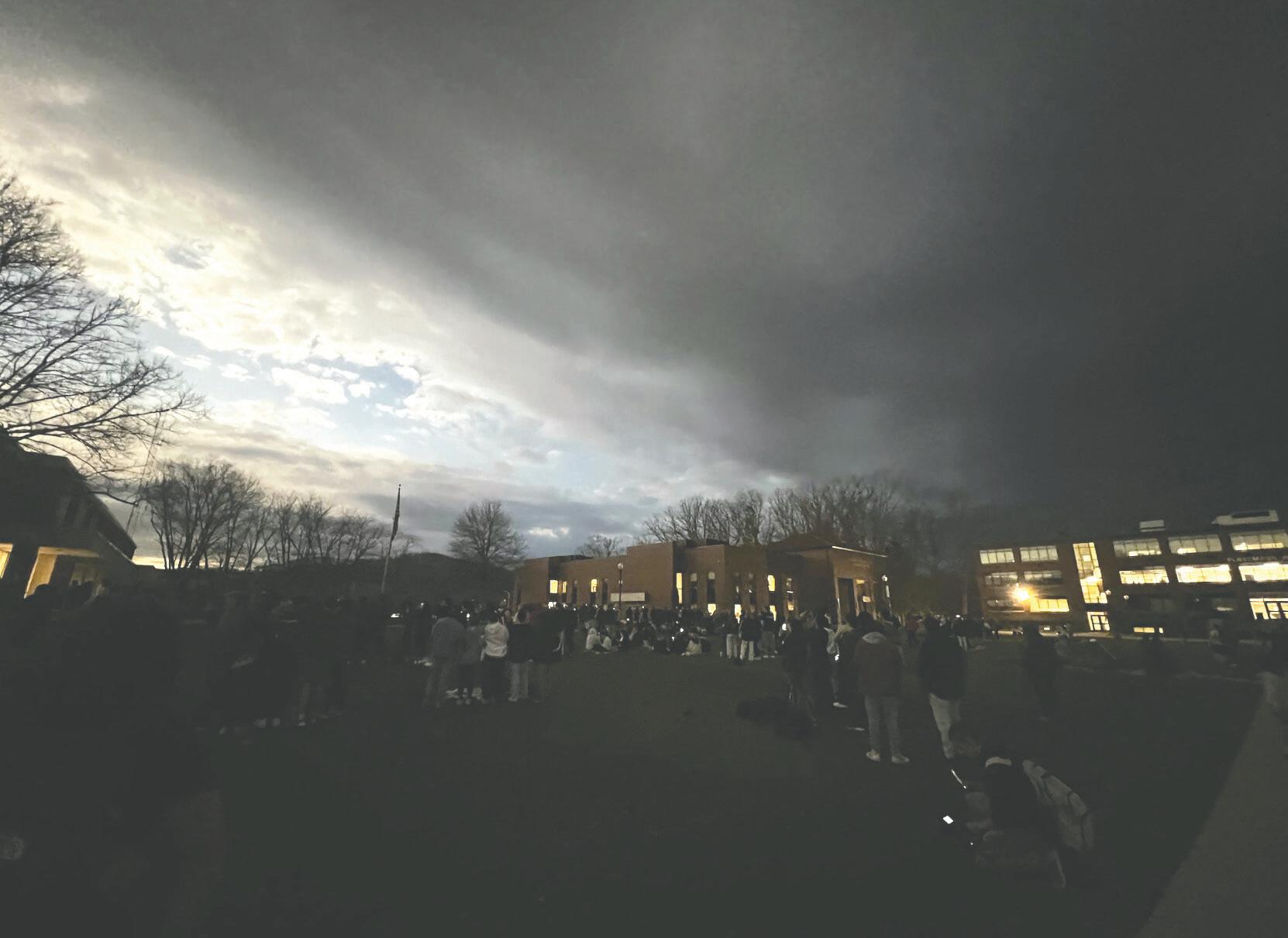



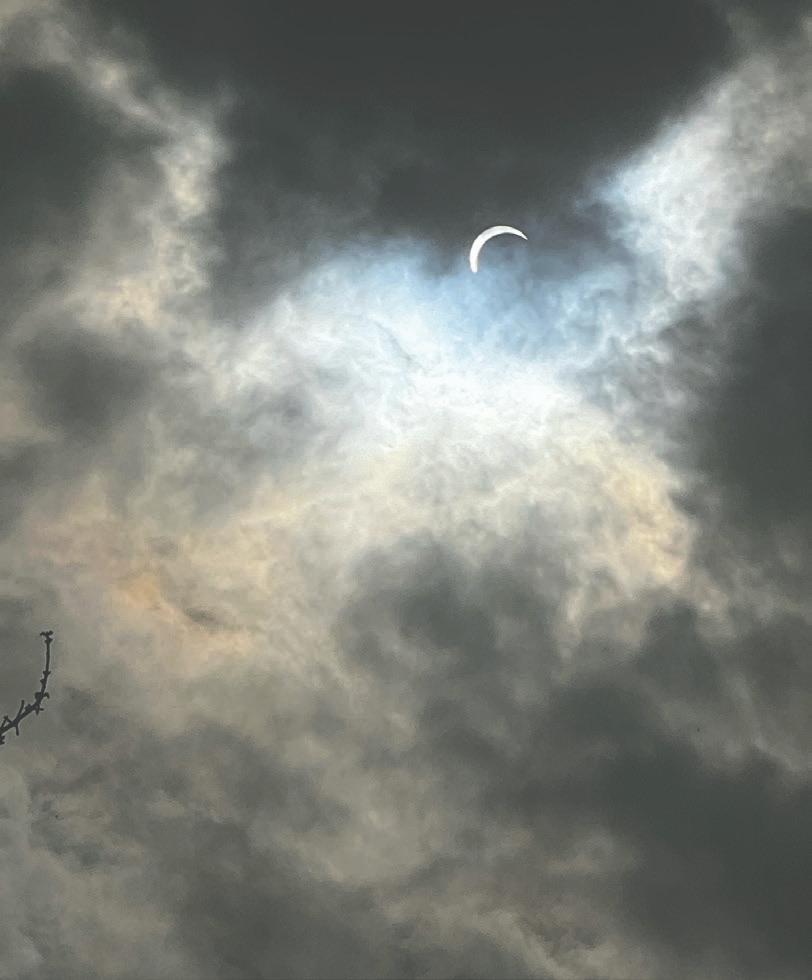
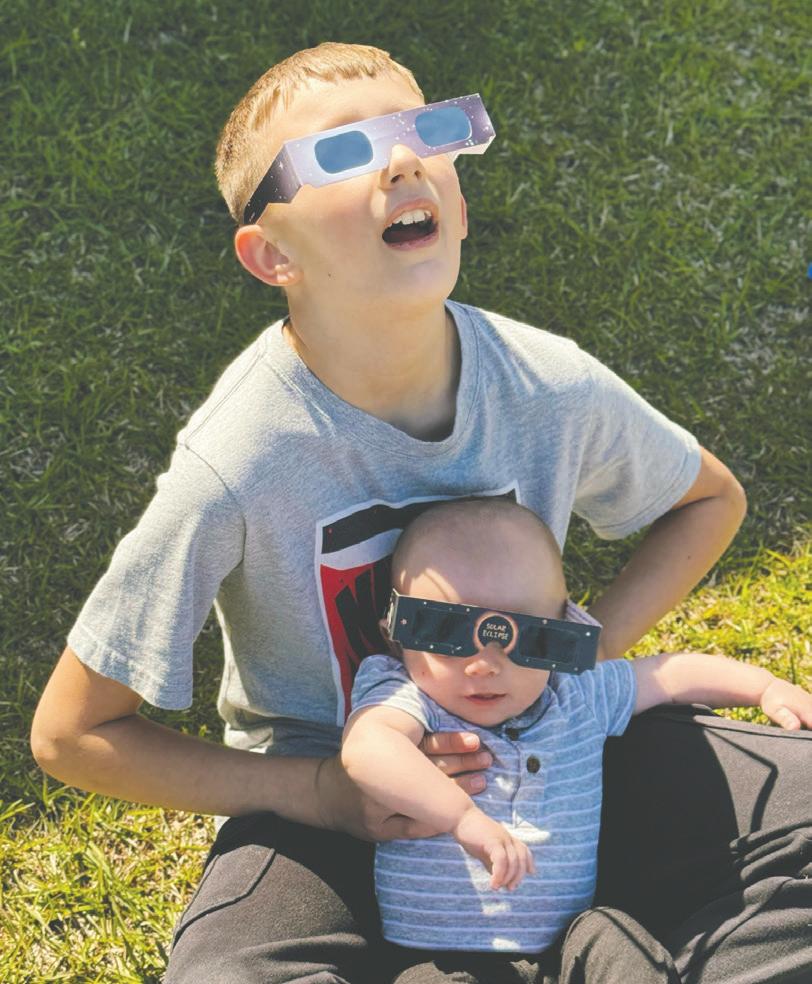


If you want personal service and understanding with your insurance. I’m your good neighbor. You’ll also get 24/7 tech options when you want to manage your policies online. Call, click or stop by for a quote today.



Devon Kloss Agent
53 Main St. Bradford, PA 16701
Bus: 814-817-2086
www.devonklossinsurance.com
devon@devonklossinsurance.com
Like a good neighbor, State Farm is there.®
















Clouds couldn’t dampen the enthusiasm of the area’s eclipse watchers April 8, as they hoped for a break in the cover just long enough to catch the celestial spectacle.
While the changing forecast sent some observers searching for clearer skies, many carried on with plans to attend one of several local watch parties.
Audiences at Bradford Airport enjoyed some treats from a couple food trucks on site and caught a glimpse as clouds skittered over the area. Asked whether he thought it would get really dark when the moon covered the sun, 7-year-old Vin-
cent Compton said, yes, “but only for 9 seconds.”
Debby and Tony Harlan and Darrell and Alice Harlan set up camp chairs in the long-term lot to take it all in.
Debby said, “For the next eclipse I’ll be 82 and Tony will be 84, and these guys — “Won’t be here,” Darrell, 86, interjected with a chuckle.
Crook Farm opened its Sea ward Avenue grounds for viewers like Linda DuBois, who said, “This is our old neighborhood, and with my age this will probably
be my last chance to see one.”
While not quite in the path of totality, it grew dark enough in the region to trigger some dusk-to-dawn lights.
Cherri Hayden, watching from the Zippo/Case Museum, said, “It wasn’t what I expected. It got dark really quick. For a minute it was dark
and now it’s light. It was shorter than I thought it would be.”
Still others simply stepped outside where they were, or took up an observation post right on Main Street.
Justin Comer of Bradford said, “With the cloud cover, you aren’t even going to get to see it. Whoever funded this eclipse



continued from page 8
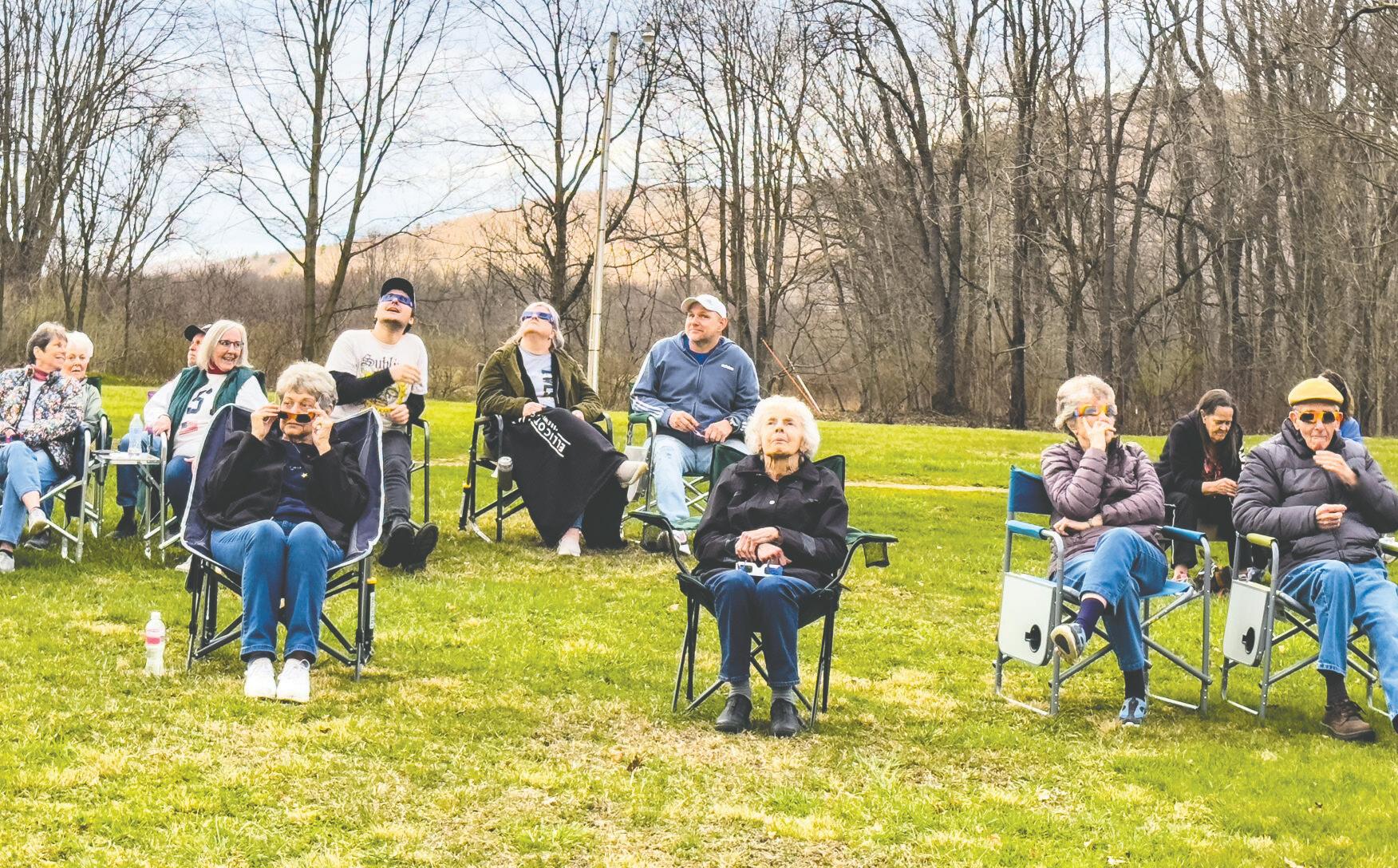
should have scheduled it for April 7 instead.”
Like many, Will Hurd of Bradford hoped to see the eclipse during glances stolen on his work shift.
“I am just really hoping to be able to catch a glimpse from between the clouds. I am at work all day, so it will be
a miracle if I see it.”
Allison Frantz of Bradford noted, “We are so lucky to have a front-row seat right here on Main Street, in Bradford. And we didn’t have to spend a fortune and travel to Buffalo to see it.”
Liz Platko of Bradford said, “This is definitely


a once-in-a-lifetime experience.”
The next total eclipse will occur in August 2044, but will be in totality only over Montana and North Dakota. The next eclipse visible in
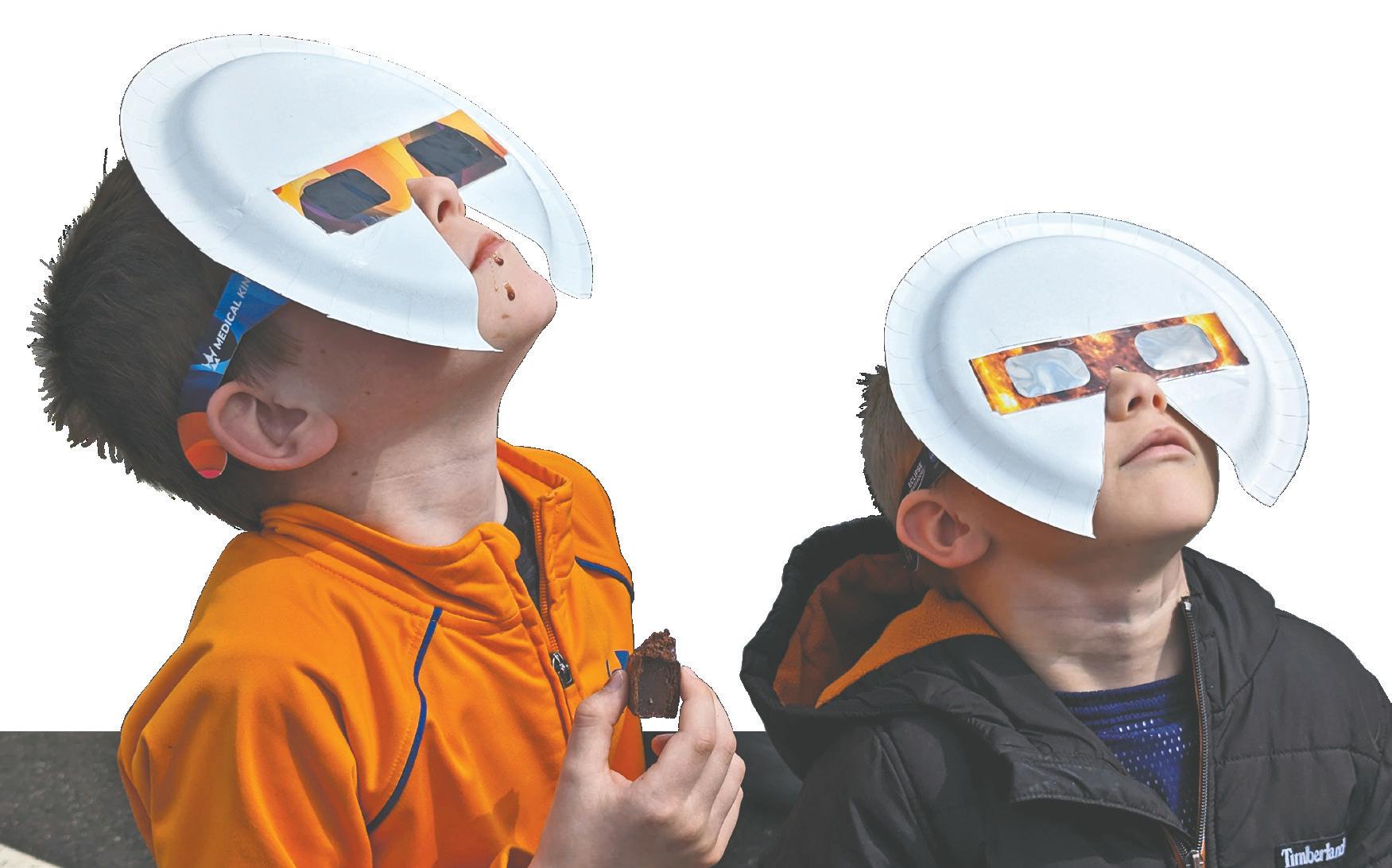
continued on page 10
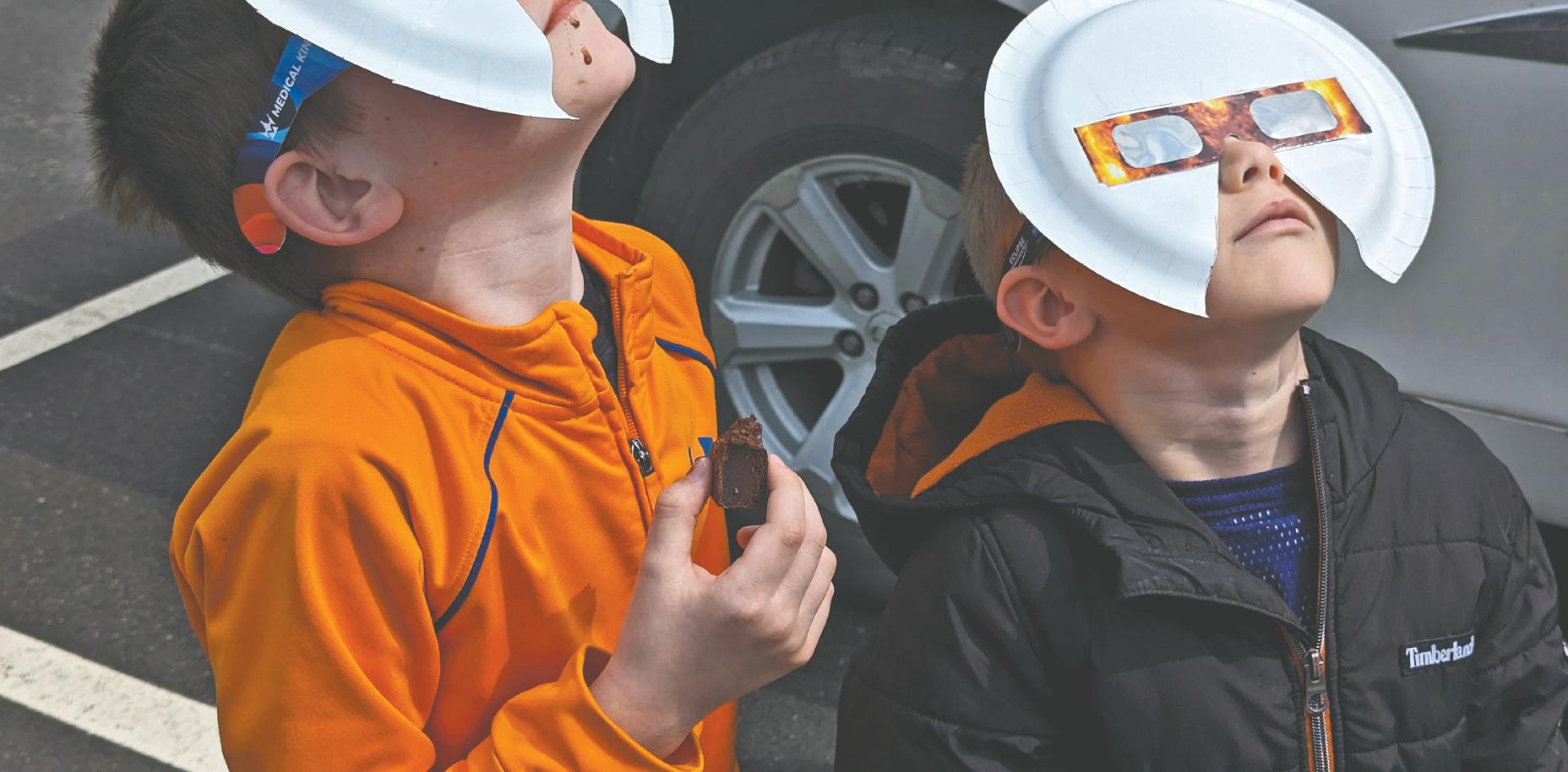
APRIL 18, 2024


Region catches glimpse of eclipse continued from page 9
totality along a path crossing the nation is due in August 2045.
If you still have your eclipse glasses, the organization Eclipse Glasses USA is collecting used but undamaged pairs. They’ll be sent to schools in Latin America so that school-age children can safely view the annular eclipse visible there in October.
During an annular eclipse, the moon passes between the sun and the earth without completely covering the sun, leaving a bright ring — or annulus — around the moon.
If you’d like to contribute, ship your glasses by Aug. 1 to Eclipse Glasses USA LLC, P.O. Box 50571, Provo, UT 84605.
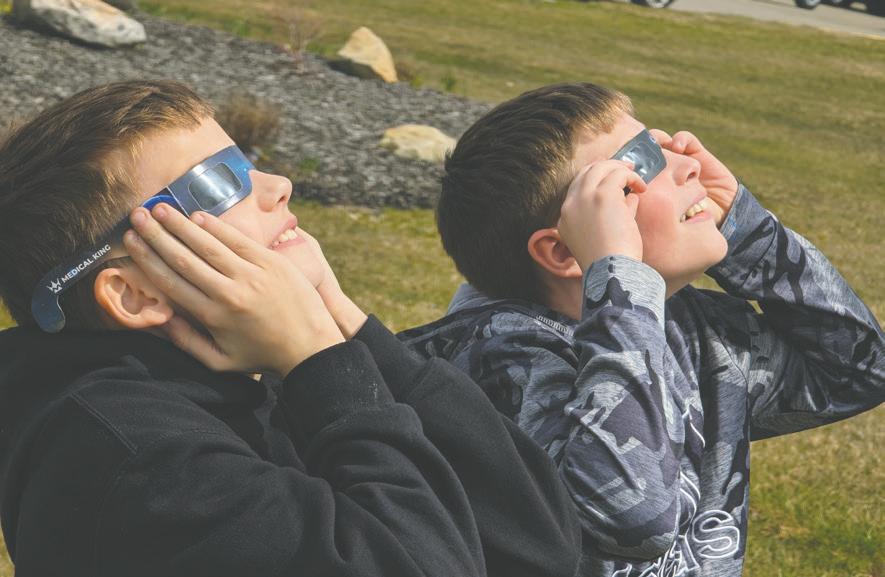






The viewing experience for April 8’s total solar eclipse that passed through the central and northeastern United States was not ideal in Cattaraugus County with clouds covering the sky most of the day.
But that didn’t dampen the spirits of thousands of out-oftowners who traveled from the east and south to the area to witness the moon pass
in front of the sun with totality coming at about 3:18 p.m.
At the Seneca Allegany Resort & Casino, hundreds of eclipse viewers attended the watch party in the east parking lot. The family-friendly event included food trucks, outdoor games and activities and live entertainment by the Jeremy Keyes Band from Buffalo.
Allen and Judy Reed made the nearly five-hour drive from Hagerstown, Md., to
the casino to watch the eclipse.
“Problem is, as sunny and beautiful as it was yesterday, the sky is completely cloud-covered. Go figure,” Allen Reed said. “Oh, well, it’s a party and the band is good!”
License plates from nearby Pennsylvania were spotted throughout the casino parking lot as were some from New Jersey and Virginia.
Salamanca resident Denise Winsor
watched the eclipse from one of the nearby gas stations not far from the casino.
“I saw it and felt it,” she said. “Clouds broke just enough for us outside to see it just before totality and at totality.”
Nora Cole watched the eclipse from her porch on Wildwood Avenue. “The geese on the river started honking at about totality,” she observed.
Beverly Nelson,


who grew up in Salamanca, watched the eclipse from where she now lives in Tulsa, Okla., which was on the edge of totality at 95-98%.
“It was awesome!” she said.
“I caught it at one-quarter, onehalf, three-quarters and almost total.”
In anticipation of the increased number of visitors for the day and the weekend beforehand, municipalities across the county were looking forward to the tourism opportunities the eclipse could provide.
Adam Jester, executive director of the Greater Olean Area Chamber of Commerce, said they were excited to welcome all the people who made the trip to the area, even if Olean wasn’t entirely in the path of totality.
“We certainly hope they enjoy their time here, such that they return and that they are able to carve out some time to support our small businesses and member businesses in a way that’s meaningful for them,” he said. “Like everyone else, we’re just hoping for some clear skies this afternoon.”

Catt. County eclipse-watchers continued from page 12
Jester said it’s been an interesting experience preparing for the event with some hotels being booked up for months if not more than a year in advance. He said the chamber had a pronounced response in recent weeks when they acquired eclipse glasses to dispense to the public and ultimately ran out of them in short order.
“It seems like there’s a lot of energy behind it in this area, which is exciting for us and we hope translates into additional tourism and commerce for the Southern Tier,” he said. “We’re hoping to hear good things from a results perspective after the fact as well.”
In Ellicottville, Chamber executive director
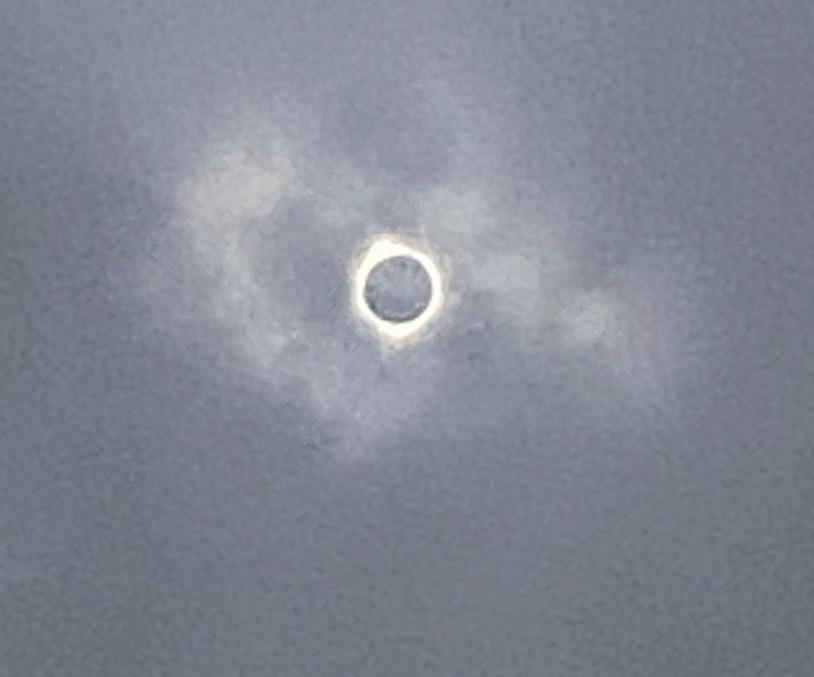
Brian McFadden said they’d been working with Cattaraugus County for the past year on safety measures in anticipation of the increased traffic and people. He said they also
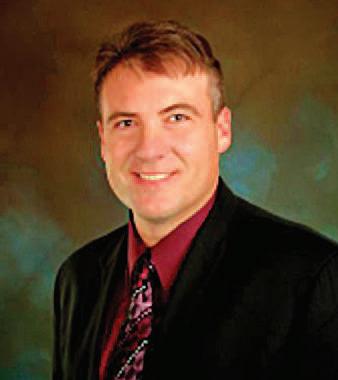
kept local businesses upto-date as hotel reservations began filling up and made sure they had plenty of glasses around town to hand out to visitors.
“They’re from all over
the place. New Jersey, southern Pennsylvania, everywhere,” he said.
“We had a really busy weekend. You could tell they were new folks because they were walking around in groups of eight, 10 or 12, and they were standing in front of the ski tree taking pictures.”
McFadden said a couple of bed-and-breakfast spots still had a couple of rooms open last week, but the hotels and motels had been booked up for quite a while. However, he said there were no crazy price bumps for people staying in the village for the eclipse.
“We weren’t much off our regular pricing,” he said. “No price gouging going on in Ellicottville.”
APRIL 18, 2024


On a cloudy April 8 in Wellsville there wasn’t much of an eclipse to see, even if you could figure out where Ole Sol was.
You could feel the warmth of the sun outside the David A. Howe Public Library, but as for where it was located in a gloomy sky was anyone’s guess. On the far horizon, just above the hilltops there was a slight suggestion of blue sky.
Predictions earlier had noted there was only a 15% chance of clear skies in Wellsville. Even so, although a live stream from NASA follow-
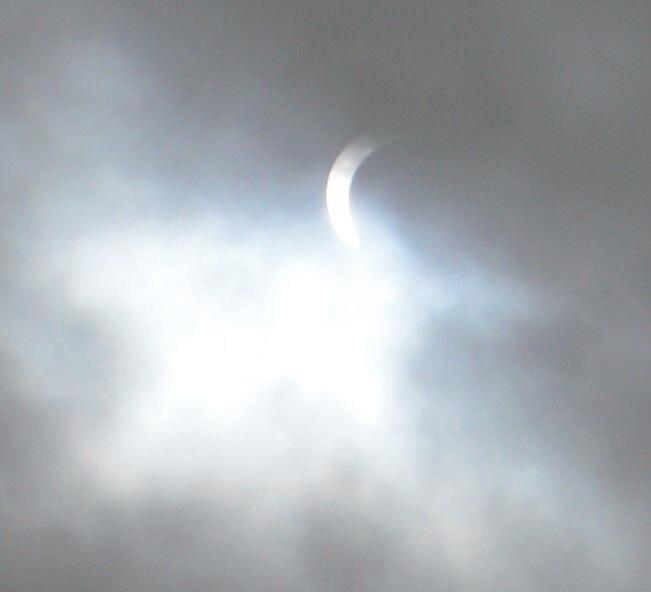
ing the progression of the eclipse was on computer in the Monday Club Room of the library, people were gathered on the back terrace looking at the sky in the hope of getting a glimpse of the real thing.
At 2:30 p.m. people
began to gather, but the throngs taking place in areas with better viewing never materialized here. Wellsville was slated to see a 99.5% of the eclipse since it was not in the rath of totality, as were Belfast, Angelica and Houghton.
Even though the percentage was high, Wellsville still would not see the corona when the moon totally blotted out the sun, leaving only a bright, outer ring of the sun visible. However, people did spot part of the eclipse when the clouds parted, slightly and briefly, when everyone pointed to the sky.
As the sky darkened many noted that the streetlights came on, and looked to the north to see a very, very dark sky.
So while the eclipse was less than stellar in the village, the opportunities for families to gather, friends to chat, and the community to come together was in itself a celestial event.
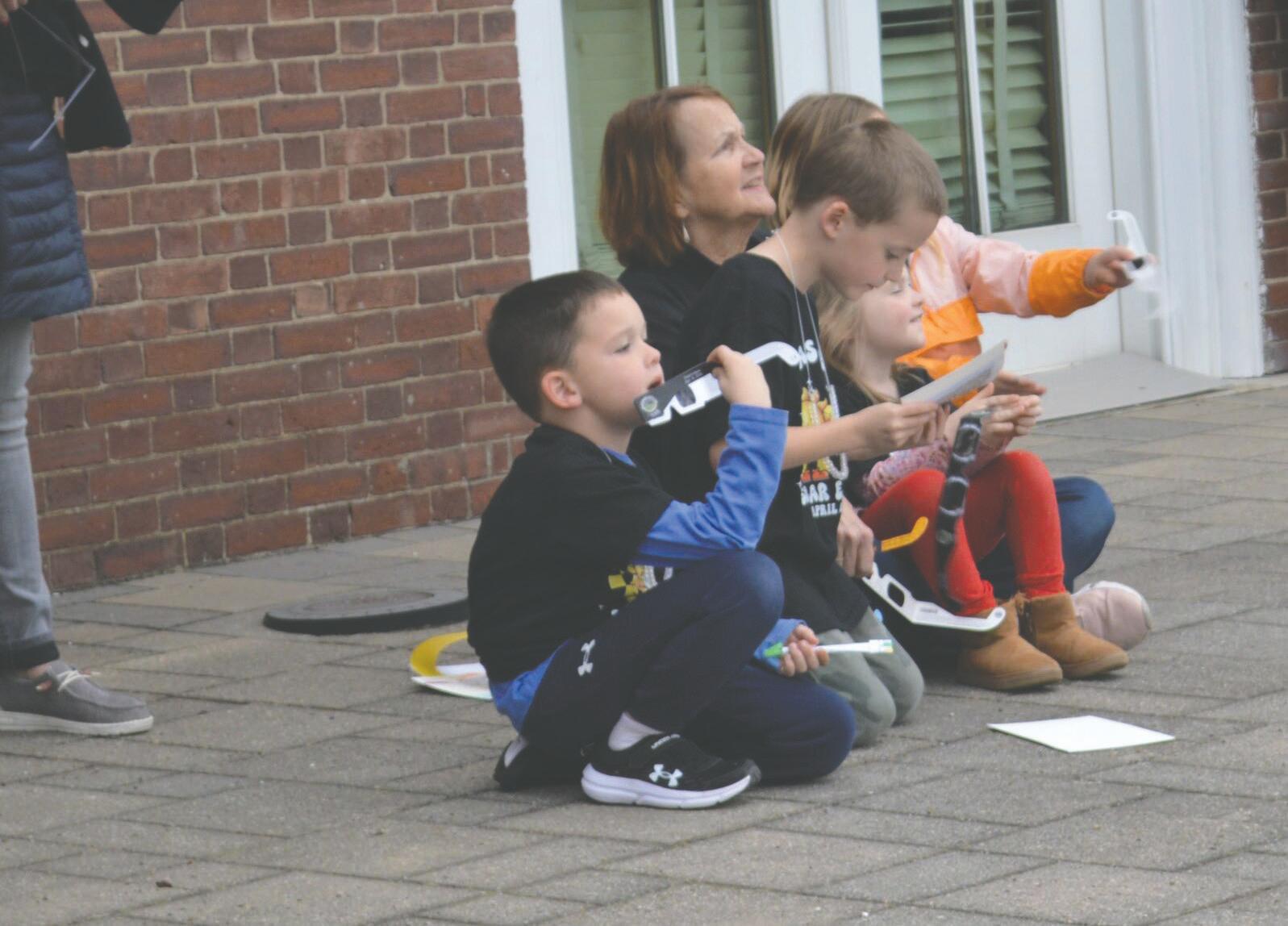


On May 31, 1983, a U.S. Navy research ship was conducting hydrographic surveys in the Makassar Strait in Indonesia. The crew and civilian personnel on the USNS Chauvenet — including Engineering Aide 2nd Class Mike Gonska from Olean — got a welcome break from the monotony of sea duty when they experienced what for most is a once-in-a-lifetime spectacle.
The ship was essentially at the centerline of the path of totality in the Pacific when a solar eclipse occurred. That meant the ship’s crew

had as good a seat as anyone on the planet to witness a perfect corona caused by the moon passing directly in front of the sun.
Nearly 41 years later, Gonska, retired from Dresser-Rand and living in his hometown, didn’t have as far to travel for the “once-ina-lifetime” experience — again — of a total solar eclipse. He watched the April 8 eclipse in Olean. Gonska told the Times Herald of his vivid recollections of watching the 1983 eclipse from the deck of the Chauvenet.
“We were ready for it,” he said. “The ship’s photographer
had learned that he could overexpose old camera film that he cut up into strips that were safe to use in watching (the eclipse). Everyone got the opportunity to be out on the deck and look at it.
“I remember thinking to myself, ‘This is wild,’” Gonska added. “’I’m a 22-year-old from Olean, N.Y., and I’m out in the middle of the ocean in Southeast Asia and I’m seeing this.’...
“They told us at the time it’s a once-ina-lifetime experience, and here I am going to see it twice,” he said.
While plenty of scientists and eclipse enthusiasts can and
will get themselves to multiple paths of totality for solar eclipse events, Gonska reflected that fewer people on the globe find themselves within two paths of totality merely by happenstance — essentially staying put near home for one and perhaps living or working somewhere else for another.
Fewer still are folks who will have witnessed a total eclipse the other side of the world in the Pacific and then one in Olean, New York.
An account from the ship noted that, in the final seconds before totality, a
APRIL 18, 2024



phenomenon called Baily’s Beads — bright specks caused by light shining through the moon’s rough edge — appeared. The “crew watched as the mass of specks began to vanish until a final bit of light shining through a deep valley on the moon’s edge revealed a lone sparkle seemingly attached to the corona — the diamond in a ring.”
A report by the Chauvenet’s radio officer, an active amateur astronomer, stated: “The totality lasted five minutes and twenty seconds at this
location. The planets Mercury, Venus and Mars were sighted, there was variable cloud coverage on the horizon and onrush of shadow was observed just prior of ‘Diamond Ring.’”
A 2-degree drop in temperature was noted during the eclipse, with the temperature shortly returning to the midday norm in that part of the world as the eclipse passed.
Gonska, who graduated from Olean High School in 1979 and joined the Navy in November 1980, said the eclipse watched in Makassar
Strait was certainly a highlight during his service, but he noted he had many wonderful experiences. He saw duty on the Japanese island of Okinawa and later served in the Bahamas.
He returned to the States and applied his Navy SeaBee experience to earning an associate degree in mechanical engineering at Alfred State College. He worked for several years as a design drafter for Dresser-Rand.
He married his wife Jean in May 1988.
“I had a good experience in the Navy,” he said, explaining his service helped give him more discipline and direction. “I saw a lot of great places ... I learned to scuba dive and a lot of other skills. For me it was really worth it.”


FORT WORTH, TEXAS — Photographer Mat Otero has been working at the AP in the Dallas bureau for nearly 30 years. In that time, he’s covered an annular and partial solar eclipse, so he was prepared for the challenge of making a photo of the only total solar eclipse on this scale he will likely cover in his career (the next coast-to-coast eclipse in the U.S. is expected in 21 years). This is what he said about making this extraordinary image.
Why this photo
My job is to create and curate eye catching images that will draw a viewer in, communicating from my lens to their eyes and brain. That’s part of the magic of AP — our work makes a truly massive journey every day, from the field to viewers around the world.
With millions interested in such a historic and widely photographed event as this eclipse, I knew that anything I produced would need to grab
attention immediately and be dispatched ASAP after the moment. We joke at AP that every millisecond is our deadline.
Our modern cameras can capture massive amounts of photos, requiring us to manage and edit for best choices in a very fast fashion. In the minutes and seconds before the eclipse, clouds flowed in and out. I thought I was going to get skunked and have nothing. Ultimately the clouds opened, parting for a few minutes and allowing the light into my camera to make this photo.
How I made this photo
Leading up to the eclipse, I had illustrated an AP story about research at the Fort Worth Zoo into how animals react to the darkness, so it was decided to position me there for the actual eclipse. We were just inside the edge of totality, so the event was going to be a little bit faster than locations near the center of its path across the country.
I have an assortment of neutral


density filters because I had previously photographed an annular eclipse, when the moon is farther away in its Earth orbit and therefore doesn’t block the entirety of the sun. An “annulus” of bright sunlight rings the moon, but the spectacular corona isn’t visible as it would be during a total eclipse. This time, I used the filters to make a solar optical filter for use with a new 200-600mm lens — that would be my primary camera. I also had wide and midrange angled cameras, both mounted on a tripod to be trigged by remotes.
I read as much as
I could about photographing a total eclipse. I ran tests with gear, shooting position and sun placement. A sun tracking app was a useful guide for where the sun would be in the sky. Because the sun was at such a high angle above, I decided the best position was to lay flat on my back looking up. I practiced laying on a yoga block and mat holding a long-lensed camera and keeping as still as possible.
Seeking to get the lushest look out of the camera and reducing the possibility of digital noise, I chose


capturing the eclipse totality continued from page 17
to photograph at a slower shutter speed (1/50 of a sec.) and ISO (160) with a 6.3 aperture to better show possible solar prominences — the reddish trails of plasma that loop off the sun’s surface.
Yoga mat in tow, I made sure to pack a small lunch for myself and a reporter working our spot in the Zoo gallery. As totality moved in, there were a couple of technical issues that needed working out: changing to a hard wire when my
remote did not work and repositioning the tripod to frame the sky — where’s the sun again? I sometimes describe my job as looking through a straw and now it’s also on a cloudy day.
I had read and talked with other photogs about how fast the light-burst phase of the eclipse would pass but, wow, was it faster and more dazzling than I expected.
I might have audibly gasped as I “prayed and sprayed,” firing frames and watching
the ever-changing light. I even said to myself aloud, “You can see the fire.”
Thankfully, the clouds stayed open long enough to allow a good look. As soon as the giant shadow passed over, I tagged my possible best photos in the camera, then ingested them into my laptop for a quick edit and dispatch to the photo desk editors.
Why this photo works
Visual communication can be timeless,
needing no translation. This photo captured a fraction of a second in time, showing wisps of solar energy and light fighting to get around the dark side of the moon. It feels like a secret look into the cosmos and the celestial dance of the Earth, moon and sun, all running rings around each other at incomprehensible speeds. The photo reminds me of ancient Native American rock art, depicting the solar eclipses our ancestors watched, just like us.
MESQUITE, Texas — A chilly, midday darkness fell across North America on Monday as a total solar eclipse raced across the continent, thrilling those lucky enough to behold the spectacle through clear skies.
Street lights blinked on and the planets came into view, as the moon shrouded the sun for a few minutes across the land. Dogs howled, frogs croaked and some people wept, all part of the eclipse mania gripping Mexico, the U.S. and Canada.
Almost everyone
in North America could see at least a partial eclipse, weather permitting.
It was the continent’s biggest eclipse audience ever, with a couple hundred million people living in or near the shadow’s path, plus scores of out-of-towners flocking in to see it. With the next coast-to-coast eclipse 21 years out, the pressure was on to catch this one.
Clouds blanketed most of Texas as the total solar eclipse began its diagonal dash across land, starting along Mexico’s mostly clear Pacific coast and aiming for Texas and 14 other U.S. states, before exiting into the North Atlantic near
Newfoundland.
In Georgetown, Texas, the skies cleared just in time to give spectators a clear view. In other spots, the eclipse played peek-a-boo with the clouds.
“We are really lucky,” said Georgetown resident Susan Robertson. “Even with the clouds it is kind of nice, because when it clears up, it is like, Wow!”
“I will never unsee this,” said Ahmed Husseim of Austin, who had the eclipse on his calendar for a year.
Just east of Dallas, the hundreds gathered at Mesquite’s downtown area cheered and whistled
as the clouds parted in the final minutes before totality. As the sun finally became cloaked, the crowd grew louder, whipping off their eclipse glasses to soak in the unforgettable view of the sun’s corona, or spiky outer atmosphere, and Venus shining brilliantly off to the right.
Going into Monday’s spectacle, northern New England into Canada had the best chances of clear skies, drawing in spectators. The ideal conditions resulted in massive, hourslong traffic jams as visitors headed home.





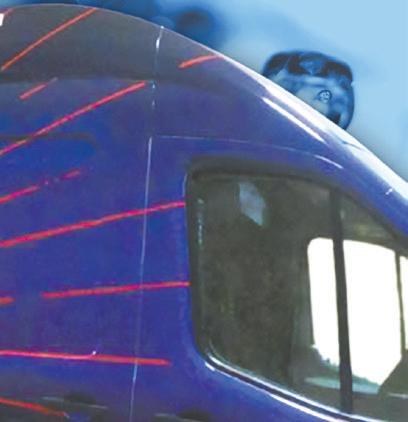




































continued from page 18
Holly Randall, who watched from Colebrook, New Hampshire, said experiencing the eclipse was beyond her expectations.
“I didn’t expect to cry when I saw it,” she said, as tears ran down her face.
The show got underway in the Pacific before noon EDT. As the darkness of totality reached the Mexican resort city of Mazatlán, the faces of spectators were illuminated only by the screens of their cellphones.
The cliff-hanging uncertainty of the weather added to the drama. But the morning’s overcast skies in Mesquite didn’t rattle Erin Froneberger, who was in town for business and brought along her eclipse glasses.
“We are always just rushing, rushing, rushing,” she said. “But this is an event that we can just take a moment, a few seconds that it’s going to happen and embrace it.”
A festival outside Austin wrapped up early on Monday because of the threat of afternoon storms. Festival organizers urged everyone to pack up and leave.
Eclipse spectators at Niagara Falls State Park had to settle for darkness, but no stunning corona views. As people made their way out of the park
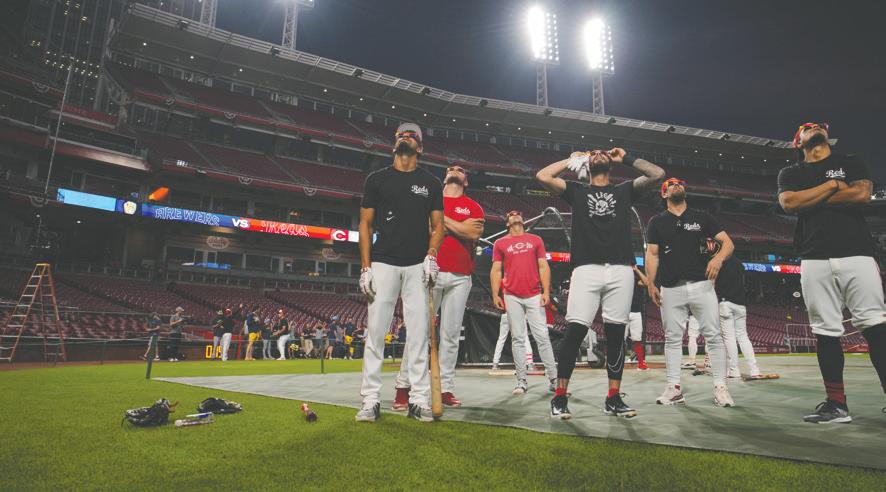
a little more than an hour later, the sun broke through.
“I’d give it a 6 out of 10,” said Haleigh Thibodeau, who traveled from Buxton, Maine, with her mother.
In Rushville, Indiana, the street lights lit up as darkness fell, drawing cheers and applause from residents gathered on porches and sidewalks.
For some, eclipse day was also their wedding day. Couples exchanged vows in a mass ceremony at a park in Trenton, Ohio.
St. Louis was just outside totality, but that didn’t stop residents from taking in the scene from the Mississippi River aboard the Tom Sawyer, a paddlewheel riverboat.
“I almost enjoyed it a little bit more because it didn’t go black,” said passenger Jeff Smith of St. Louis.
During Monday’s full eclipse, the moon slipped right in front of the sun, entirely blocking it. The re-
sulting twilight, with only the sun’s outer atmosphere or corona visible, was long enough for birds and other animals to fall silent, and for planets and stars to pop out.
At the Fort Worth Zoo, Adam Hartstone-Rose, a researcher from North Carolina State University, said most animals remained relatively calm. One gorilla climbed atop a pole and stood there for several seconds, likely a sign of vigilance.
“Nobody was doing sort of bonkers behavior,” he said.
The out-of-sync darkness lasted up to 4 minutes, 28 seconds. That’s almost twice as long as it was during the U.S. coast-to-coast eclipse seven years ago because the moon was closer to Earth.
It took just 1 hour, 40 minutes for the moon’s shadow to race more than 4,000 miles (6,500 kilometers) across the continent.
The path of totality — approximately 115 miles (185 kilometers)
wide — encompassed several major cities this time, including Dallas; Indianapolis; Cleveland; Buffalo, New York; and Montreal. An estimated 44 million people live within the track, with a couple hundred million more within 200 miles (320 kilometers).
“This may be the most viewed astronomical event in history,” said National Air and Space Museum curator Teasel Muir-Harmony, standing outside the museum in Washington, awaiting a partial eclipse.
Experts from NASA and scores of universities were posted along the route, launching research rockets and weather balloons, and conducting experiments.
Monday’s celestial sensation held special meaning for Fallon Vahani, who followed the action from the Indianapolis Motor Speedway. Blind from birth, the 44-year-old Indianapolis resident moved her fingertips over a Braille table reader, feeling the small plastic bumps pulsing as they traced the moon’s path. She’d listened to a radio broadcast of the 2017 eclipse and was eager to try this new method.
“I was very excited when I could finally understand what everyone else was talking about,” she said.


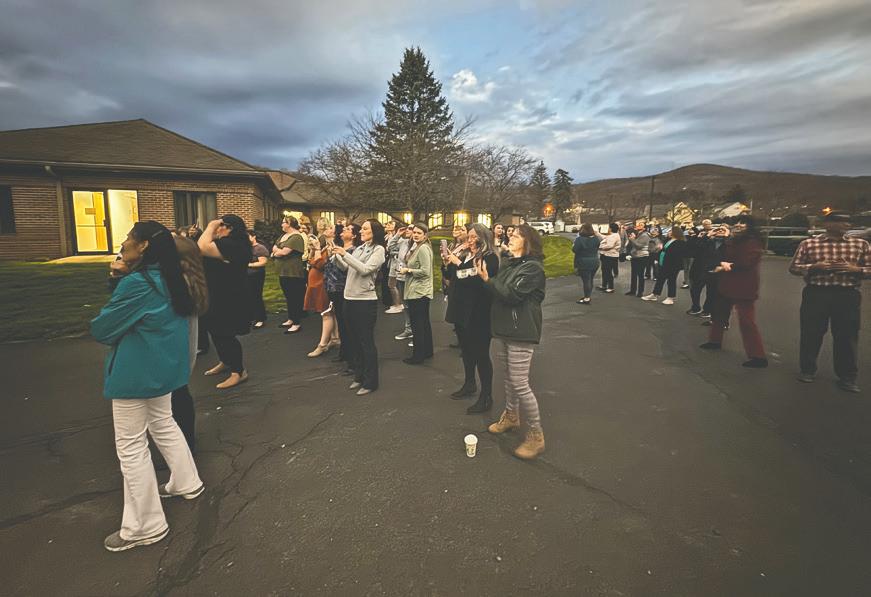

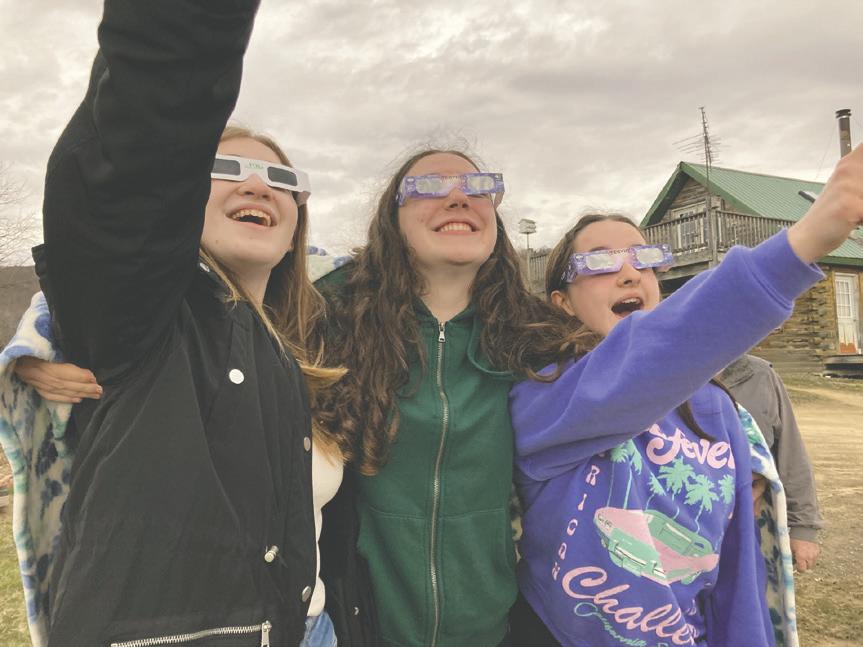
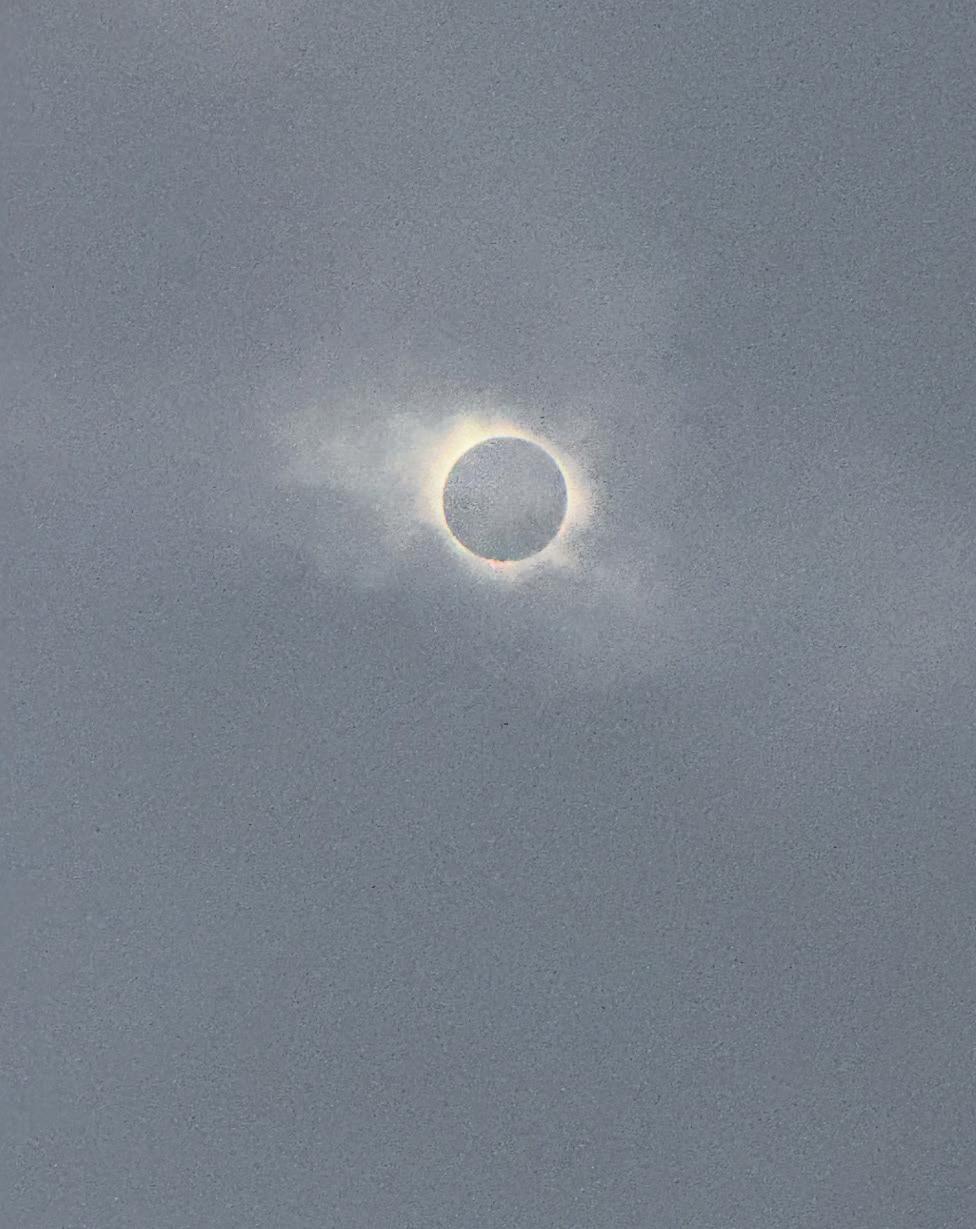










The Anderson family of Olean, N.Y., chased the sun to Erie, Pa., to experience the eclipse in its path of totality. Three generations of Andersons watched the eclipse from the parking lot of Our Lady of Mercy with about 30 other spectators. Brent, Galvin, Sheryl, Gina, Lucia and Leo, 11, met people from Toronto, New York City and California. Shown are Brent Anderson and his mother, Sheryl Anderson, with Lucia, 7, a second-grader at Portville Central School.
occasion.

Deb and Ron Kribbs of Naples, Fla., and Pete Palumbo of Bradford headed to Allegany State Park for the afternoon, starting with a picnic lunch. The group followed that up with some tailgating wine and cheese in the Red House Lake area, while waiting to see if the clouds would clear. The group donned their eclipse glasses for a 15- to 20-second glimpse of totality that, Deb said, was “well worth the trip from Florida!”
